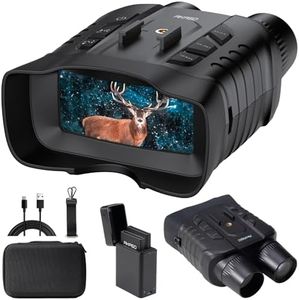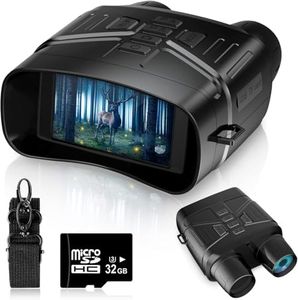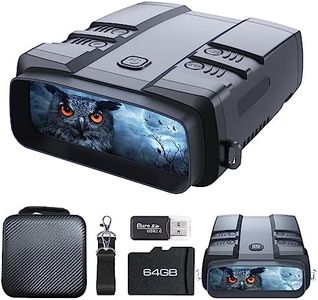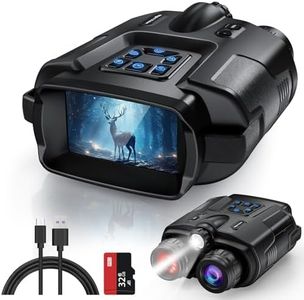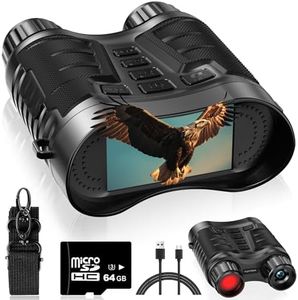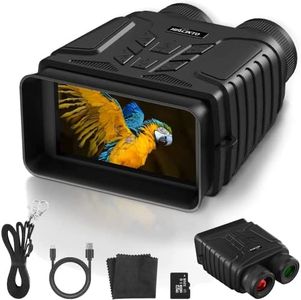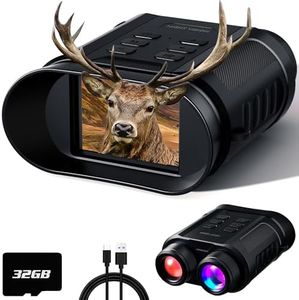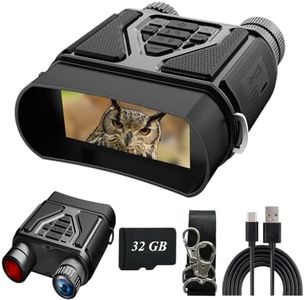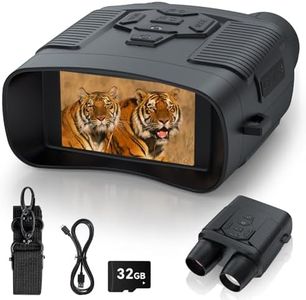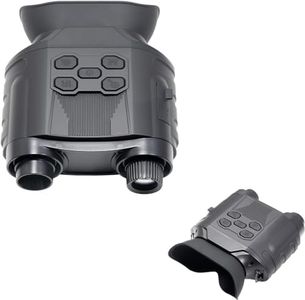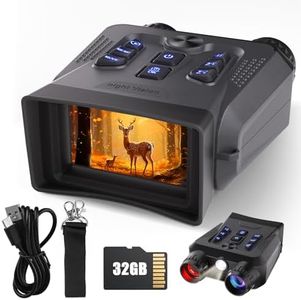We Use CookiesWe use cookies to enhance the security, performance,
functionality and for analytical and promotional activities. By continuing to browse this site you
are agreeing to our privacy policy
10 Best Budget Night Vision Binoculars
From leading brands and best sellers available on the web.Buying Guide for the Best Budget Night Vision Binoculars
Choosing the right night vision binoculars can be a game-changer for nighttime activities like wildlife watching, camping, security, or outdoor sports. The process is about finding a pair that matches your intended use, comfort requirements, and performance needs—rather than simply going for the biggest or most impressive specs. Focus on what you'll mostly be doing with them and how often. Remember that the ideal set is one that delivers clear images in low light, feels comfortable to carry or wear, and is easy to operate even in the dark.Generation (Gen 1, Gen 2, Digital, etc.)Night vision technology comes in different 'generations,' with Gen 1 and digital units being the most common in affordable models. The generation reflects the technology inside: Gen 1 provides basic night vision with limited range and image clarity, but is usually enough for casual use or beginner wildlife observation. Digital night vision binoculars use sensors and display screens, often allowing for day use as well as night, and may feature recording or photo options. Gen 2 and above are more advanced, with better image quality and performance in nearly complete darkness, but they're also more costly and not typical for entry-level choices. To pick the right one, think about your needs: for backyard wildlife, camping, or simple security, Gen 1 or digital models will probably do the job just fine.
MagnificationMagnification tells you how much closer an object will appear compared to the naked eye. Lower magnification, like 2x to 4x, gives a wider view and is easier to keep steady, making it good for moving wildlife or group observation. Higher magnification, such as 6x to 8x, lets you see more detail at a distance but narrows your field of view and makes images shakier without a tripod. Consider whether you’ll mostly be looking at things far away or observing in a broad area nearby; for most night activities, a moderate magnification is more practical and user-friendly.
Objective Lens DiameterThe objective lens (the big lens at the front) size, usually measured in millimeters, controls how much light the binoculars can gather. Bigger lenses (like 40mm or more) bring in more light, helping you see better in darkness, but also make binoculars larger and heavier. Smaller lenses (25-35mm) are easier to carry and handle, ideal for quick trips or lightweight travel, but might not be quite as bright in very low-light. You should pick a lens size based on your priority—brighter images for stationary viewing, or portability and lighter weight for field movement.
Infrared (IR) Illuminator StrengthThe IR illuminator acts like an invisible flashlight, helping the binoculars see in total darkness. The strength and range of the IR beam can make a huge difference in completely dark environments. Some binoculars have adjustable IR power levels, letting you boost light for longer range or turn it down to save battery. If you plan on using the binoculars in places with no ambient light (like deep woods or caves), look for models with a strong or adjustable IR illuminator.
Field of View (FOV)Field of view tells you how wide an area you can see through the binoculars at a certain distance, usually measured in degrees or in feet at 1000 yards/meters. A wider FOV makes it easier to spot moving animals or scan broad areas, which is ideal for tracking wildlife or crowd monitoring. A narrower FOV, often found in high magnification models, is better for focusing on stationary subjects far away. Think about your main use—if you want to see large areas at once, choose a wider field of view.
Battery LifeNight vision binoculars need power for their electronics and IR illuminator, so how long they run on a set of batteries matters, especially for long outings. Some models last just a couple of hours with heavy IR use, while others can go much longer. Choose a model that can run at least as long as your planned usage sessions, and always consider ease of battery replacement or charging as part of your user experience.
Durability and Weather ResistanceOutdoor gear needs to withstand some tough conditions. Look for binoculars rated for water- or weather-resistance, as these will handle dew, rain, and dust better. Sturdier cases or rugged exterior coatings can also extend the life of your device, especially if you expect rough handling or use in demanding environments. If gentle backyard viewing is your main activity, durability may be less important than for hiking or camping.
Weight and ErgonomicsNight vision binoculars can be heavier than regular binoculars because of their extra electronics. A lighter, well-balanced set is easier to hold and use for longer periods. Consider how you’ll carry them, if you’ll need to use them one-handed, and whether the size and grip are comfortable. If you plan long sessions or frequent travel, aim for ergonomic designs that won’t tire your arms or neck.
